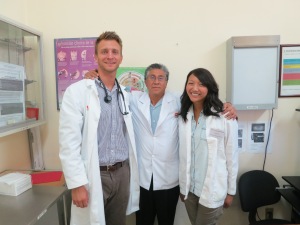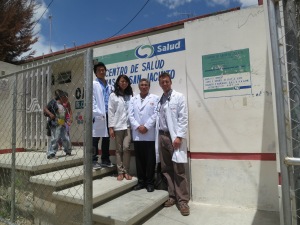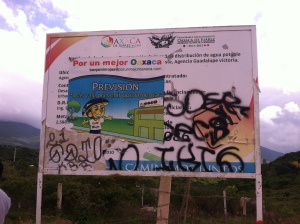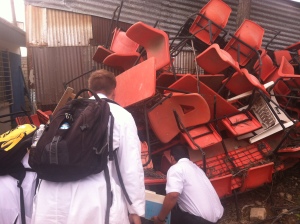The following week, I observed Dr. Ramirez at Centro de Salud Lomas de San Jacinto, a smaller clinic in a mountainous rural town. Dr. Ramirez spoke so rapidly most of the week that I had an even harder time understanding him. Even so, it was obvious that he was very interested in his students and always made time to check in with us.

 He explained aspects of the public health system and introduced us to the public health worker. The public health worker welcomed us in joining him to survey the community. During one of the days, we went with him to a local school and inspected areas that served as mosquito breeding sites. Anything that collected water was a threat. I saw some larvae swimming in little pools of water collected on an old tire, wheelbarrow, and seats holding rain water. As mosquitos are vectors for infectious diseases, we emptied out these pools of water, and the public health worker informed the school director of all the public health concerns at the school.
He explained aspects of the public health system and introduced us to the public health worker. The public health worker welcomed us in joining him to survey the community. During one of the days, we went with him to a local school and inspected areas that served as mosquito breeding sites. Anything that collected water was a threat. I saw some larvae swimming in little pools of water collected on an old tire, wheelbarrow, and seats holding rain water. As mosquitos are vectors for infectious diseases, we emptied out these pools of water, and the public health worker informed the school director of all the public health concerns at the school.
As I train towards becoming a physician, my experience in the Oaxacan clinics will continue to serve as a reminder that there is more to being a healthcare provider than possessing the expertise. It is about recognizing inequities in the local and international community and applying one’s training and unique skill set to alleviate suffering for the vulnerable. Through my clinical experiences involving inequities, barriers, and resource shortages both in the U.S. and abroad, I have gained a more realistic view of the healthcare field. Such experiences have strengthened my desire to work with the underserved and medically neglected, inspiring me to meet the challenges that come with being a physician. By keeping an open mind and thinking critically about healthcare, I hope that I can find solutions wherever my career takes me.




